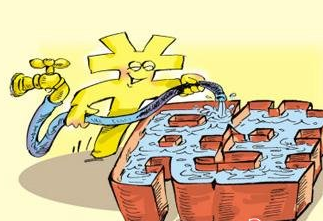Wide fare.The Economist July 6th,2013
公共費用。《經(jīng)濟學人》2013年7月6日
To ward off social ills, the region has tended to rely instead on youthful populations, bountiful growth and dutiful families. Yet as Asian countries have grown richer, older and less autocratic, their governments have responded to a rising demand from citizens for welfare, including pensions, health insurance and antipoverty schemes, such as subsidised food, public works and even cash handouts. The Asian Development Bank has tried to summarize their efforts in a single indicator, the social-protection index, published this week. The index shows both the breadth of coverage (the percentage of potential beneficiaries actually covered) and the depth (the amount of spending per beneficiary, expressed as a percentage of the country's GDP per person).
為抵御社會弊病,該地區(qū)已經(jīng)傾向于寧愿依靠年輕人群、豐富的增長和忠實的家庭。然而,隨著亞洲國家變得富裕、老齡化和民主化,政府已經(jīng)對公民關(guān)于福利日益增長的要求作出了回應,包括養(yǎng)老金、醫(yī)療保險和扶貧計劃,如補貼食品、公共工程、甚至現(xiàn)金補貼。在本周發(fā)表的社會保障指數(shù)上,亞洲開發(fā)銀行試圖總結(jié)他們在這單個指標上做出的努力。該指數(shù)顯示了覆蓋范圍的廣度(潛在受益者在實際覆蓋中的比例)和深度(每個受益人支出的數(shù)量,以該國人均國內(nèi)生產(chǎn)總值的百分比表示)。

True to their tradition of self-reliance, many Asian countries lean heavily towards social insurance, which ties benefits to contributions, rather than social assistance, which ties benefits to circumstances. In South Korea, for example, the mix is about 80% insurance to 20% assistance, according to the index. In Singapore, nine-tenths of the government's efforts consist of contributions to the country's Central Provident Fund, a compulsory saving scheme from which Singaporeans can draw for housing, health care and retirement.
因秉承本國自力更生的傳統(tǒng),許多亞洲國家過分依賴利益和貢獻掛鉤的社會保險,而不是利益和環(huán)境掛鉤的社會救助。例如在韓國,根據(jù)指數(shù),這個混合中大約80%的保險到20%的保險援助。在新加坡,9/10的政府努力是由國家公積金的貢獻所構(gòu)成,從新加坡人可以抽簽決定住房、醫(yī)療和退休產(chǎn)生一個義務的節(jié)約計劃。
But a number of countries are also experimenting with cash transfers. In 2009 Thailand's government scheme handed out 2 000 baht ($65) to registered workers earning less than 15000 baht a month, to help them weather the global financial crisis. And in South Asia, social insurance is far less dominant. That may reflect the limited reach and credibility of South Asian states, which find it difficult to collect and track contributions, especially if people doubt the state's capacity to provide promised benefits. Many governments find it easier just to hand out cheap grain, or to pay the poor to dig ditches or lay roads. India is a case in point. Thank you.
但許多國家也在嘗試現(xiàn)金流動。2009年,泰國政府計劃每個月發(fā)放2000泰銖(65美元)給年收入少于15000銖的注冊工人,幫助他們抵御全球金融危機。在南亞,社會保險遠不是那么有優(yōu)勢。這可能反映了南非國家有限的影響力和可信度,并且很難尋跡到它們的貢獻,特別是在如果人們質(zhì)疑國家是否有能力來提供他們承諾過的好處的時候。許多國家的政府發(fā)現(xiàn)僅僅分發(fā)廉價的谷物、支付窮人挖溝渠或鋪設道路的費用都是很容易的。印度在這方面就是個很好的例子。謝謝。












